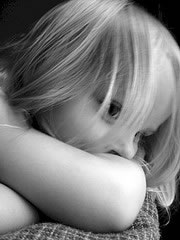
Image:Creative Commons
Alexithymia, a clinical condition typified by a reported inability to identify or describe one’s emotions, is associated with various forms of psychopathology, including depression. Highly alexithymic (HA) outpatients are more likely to be female, less likely to have children and are characterized by more somatic-affective symptoms of depression and interpersonal aloofness.
The Authors of this investigation extended these findings by examining personality traits and childhood sexual abuse history. Participants were 94 depressed patients [57.45% with recurrent major depressive disorder (MDD), 37.23% with single-episode MDD, 5.32% with depressive disorder not otherwise specified] 50 years of age and older recruited from psychiatric treatment facilities in Upstate New York. Individuals completed the Structured Clinical Interview for DSM-IV Axis I disorders. Alexithymia was assessed with the 20-item self-report Toronto Alexithymia Scale. Its 3 subscales measure difficulty identifying feelings and distinguishing them from bodily sensations (DIF), difficulty describing and communicating feelings (DDF) and externally oriented thinking (EOT), the latter being a tendency to focus on concrete details of external events rather than on aspects of inner experience. Depressive symptom severity was assessed with the Beck Depression Inventory-II (BDI-II). Five personality domains, i.e. neuroticism, extraversion, openness to experience, agreeableness and conscientiousness, were assessed with the NEO Personality Inventory. History of childhood sexual abuse was assessed using the Childhood Sexual Abuse subscale of the Childhood Trauma Questionnaire. A latent class cluster analysis (M-Plus 4.20) was performed on the DIF, DDF and EOT subscales. All 3 indicators favored a 3-cluster solution. This solution identified 3 groups, i.e. low alexithymia (LA; n = 11, 63.64% women), moderate alexithymia (MA; n = 40, 60% women) and HA (n = 43, 60.47% women). The distribution of mood diagnoses, single-episode MDD, recurrent MDD and depressive disorder not otherwise specified was not significantly different among the 3 alexithymic clusters (p> 0.05). The Authors conducted 10 separate multivariate generalized logit regressions; odds ratios were calculated for LA versus HA and MA versus HA class membership. Putative predictors were total BDI-II and the 3 subscales, childhood sexual abuse and the 5 personality domains. Covariates were age, gender and education. The 3 BDI-II subscales as well as the total score significantly distinguished LA and MA from HA. Lower levels of depressive symptoms significantly decreased the odds of HA membership. Odds ratios ranged between 0.32 and 0.94 (p< 0.05).
Childhood sexual abuse distinguished MA from HA; lower levels of childhood sexual abuse decreased the odds of HA membership (p< 0.05). Neuroticism, openness and conscientiousness also distinguished the 3 groups. Low neuroticism decreased the odds of HA membership, with odds ratios ranging between 0.95 and 0.97 (p< 0.01). Low openness and conscientiousness increased the odds of HA membership, with odds ratios ranging between 1.02 and 1.07 (p<0.05).
The HA group in this study was characterized by higher neuroticism and lower openness to experience and conscientiousness, a profile that reflects a distressed personality type, which has been related to poorer health outcomes and general functioning and more psychological distress. A similar personality profile was observed for the MA group, with the notable exception being their above-average levels of agreeableness and openness to experience. Interestingly, the HA group was characterized by more childhood sexual abuse compared to the MA patients. These findings add to the mounting evidence for a relationship between childhood sexual abuse and alexithymia; individuals with a history of childhood sexual abuse may have a reduced capacity to experience emotion in relation to their trauma, and this phenomenon may generalize to experiencing all emotions. Childhood sexual abuse has been found to interfere with the development of emotion regulation and to be related to attachment disturbance. The combination of childhood sexual abuse and alexithymia must be considered in the design and implementation of treatment studies, as these patients are more resistant to treatment (the attachment disturbance makes it more difficult for these clients to engage in a therapeutic relationship) and have slower recovery rates and poorer outcomes. Identifying a patient as alexithymic may suggest a history of early traumatic events which increases the likelihood and severity of depression. Treatment should be tailored to address the depressive symptoms along with the affective experience (identification, differentiation, labelling and management of feelings).
Source:Psychotherapy and Psychosomatics: Topciu, R.A. ; Zhao, X.; Tang, W; Heisel, M.J.; Talbot, N.L.; Duberstein, P.R. Childhood Sexual Abuse and Personality Differentiating High and Low Alexithymia in a Depressed Population. Psychother Psychosom 2009;78:385-387

